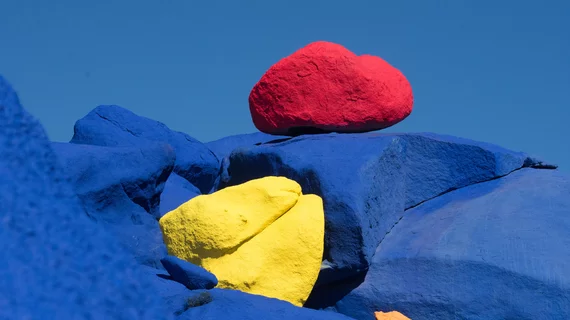Kidney stones relatively easy marks for AI-guided shockwaves
AI-aimed blasting of kidney stones from outside the body hit intended targets at a 75% clip in a proof-of-concept study, pulverizing conventional lithotripsy, which missed the mark almost half the time.
The demonstration may have influence beyond its small sample, 11 patients, because the procedure—extracorporeal shock wave lithotripsy (ESWL)—has been losing ground to other treatments that are not only more invasive but also more expensive, the researchers note.
The work was carried out at Norwegian University of Science and Technology and is described in European Urology Open Science.
Senior author Carl-Jørgen Arum, MD, and colleagues trained and tested a convolutional neural network on 57 ultrasound images of kidney stones.
They cross-validated the AI’s performance with a training set of nine patients, a validation set of one patient and a test set of one patient.
The team found the 75% bullseye rate accompanied by a 67% reduction in shockwave misses.
“Our findings suggest that there is significant potential to optimize the ESWL hit rate,” Arum and co-authors comment.
If adopted widely, they add, AI-guided ESWL could reduce shockwave misses by around one-third, “ultimately making the procedure safer for patients.”
Algorithm-controlled ESWL may require far fewer shockwaves than other stone-busting approaches, “which would thus lead to a reduction in treatment time. In fact, shockwave rates could be increased so that when the stone passes through the focal zone it could be hit multiple times.”
More:
Our algorithm can be implemented by stopping the lithotripter from firing shockwaves when the stone is out of focus. An algorithm similar to that used [in previous research] could also be added to create a pipeline that uses both ultrasound and fluoroscopy, which could potentially further improve stone-tracking ability. … The algorithm accounts for the entire kidney image, and not just the stone itself, so another potential benefit of algorithm-controlled ESWL is that the hit rate can be maintained in the later stages of the treatment course when the stone often becomes unclear on both ultrasound and fluoroscopy.”
Lead author of the study—which is inexplicably subtitled “Can a Dinosaur Think?”—is Sebastien Muller, PhD.
The report is available in full for free.

